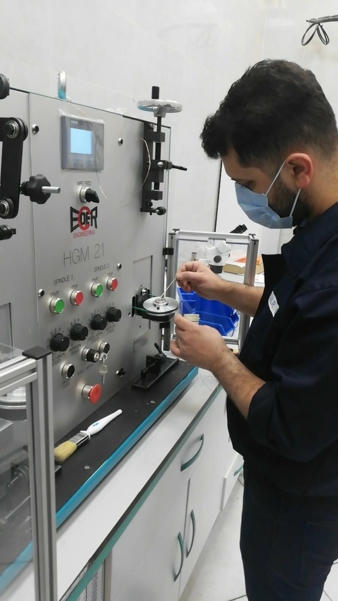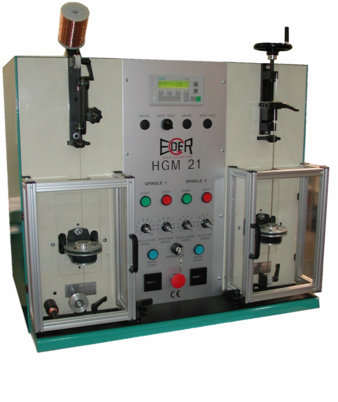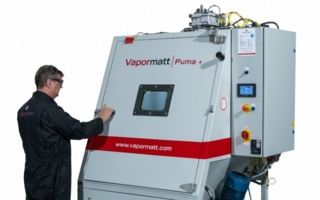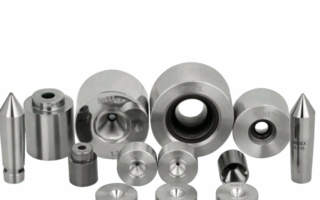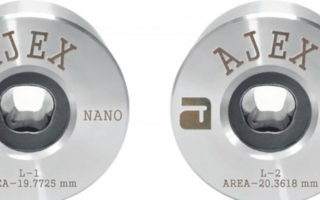27/03/2024 – Strongly growing drawing die quantities in multiple wire drawing processes
Economical maintenance solutions
All things in life are subject to wear – drawing dies are no exception. Sooner or later, and depending on the quantities of wire produced and the care with which they are used, all drawing dies wear out. The best economy and highest performance of drawing dies, with long-lasting basic dimensions, can be achieved if they are repolished as soon as the polish at the wire contact point in the drawing cone becomes cloudy.
With this method, the drawing die in question can remain in use for a correspondingly long time and with the original diameter before it has to be reworked to the next larger bore area and returned to further use.
Today, the wire and cable industry, especially in the non-ferrous metal sector, increasingly uses high-performance multiple drawing machines, sometimes equipped with up to 48 lines. In each of these lines, sometimes 30 high-quality drawing dies made of diamond or PCD are in use, which sooner or later have to be professionally reworked in order to maintain the required efficiency in the company.
The growing number of drawing dies that need to be repaired is presenting many companies with increasing problems, because often the traditionally available maintenance machines no longer offer the reworking potential that is currently required, or there is a lack of suitably trained personnel in the drawing die workshop. Often both come together.
To solve these problems, Eder Engineering-Austria, with more than 75 years of experience in this field, has developed two easy-to-use, ideally complementary high-performance machines for die maintenance, which accomplish this task with the least possible use of trained personnel and also for the entire, most important die drilling range from 0.05mm up to 9mm Ø in each case.
The first of these two machines, is the powerful ultrasonic machine, type "USP-Twin", which is equipped with two independently activatable work stations, requires only one operator and thus offers double the throughput of repaired and reusable drawing dies.
Like all ultrasonic machines, the “USP-Twin” system is ideal for grinding and polishing the conical parts of the drawing die geometry. It has two integrated needle grinding devices, oscillating polishing tables and work cycle limits, which significantly simplify all operations.
The next step is to calibrate and polish the entire quantity of drawing dies already pre-machined in the cone, now also in the drawing cylinder/bearing, for which an identical throughput potential is available with the second high-performance machine, the wire calibration machine, type “HGM-21”, so as not to cause a “bottleneck” in the work operation.
Accordingly, the “HGM-21” system also has two individually usable, programmable workstations and a high calibration speed required for PCD drawing dies. Once again, one operator is sufficient and the wide working range from 0.05mm to 10mm Ø can be machined continuously.
At the end of the scheduled processing time, the respective station switches off automatically, which relieves the personnel accordingly and frees them up for other activities.
The multiple advantages of a modern die-workshop line, can prolong the service life of these important drawing tools considerably, often even maintaining their initial diameter and as such are offering:
– reduced necessary stock of die-tools and as such less cost
– accurate and flexible refurbishment at any time required
– increased competitiveness , e.g. for "just-in-time orders"
– full transparency over your die-stock and refurbishment cost
– complete in-house independence
Eder Engineering, with over 75 years of experience, has once again set new standards for the economic refurbishment of large diamond/PKD die sets, which are now advantageously available.
The author of the article is Kurt G. Eder, CEO, Eder Engineering GmbH.
wire 2024, hall 10 booth C 42-01
Eder Engineering GmbH
Peter-Jordan-Strasse 12/3
1190 Wien/Austria
Contact person is Kurt G. Eder
Tel.: +43 1 367 4949-13
kurt.eder@eder-eng.com
www.eder-eng.com

